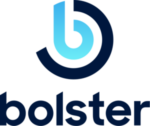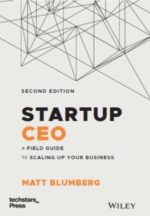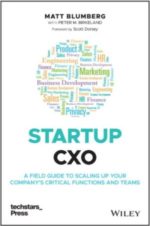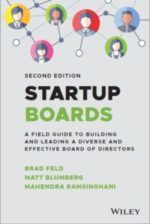Good Help is Hard to Find
Good Help is Hard to Find
We’re having a bitch of a time lately hiring good sales people. We’re growing like crazy this year and are trying to invest more in our salesforce, but it’s not easy. And we’re a good catch. Good brand, healthy company, good comp and benefits, charming CEO, the works.
I just traded emails with a friend who is CEO of another online marketing services firm who said the same thing, with the exact same explanation I have:
I have been so unimpressed with everyone from our space (weak links drop out, mediocrity churns from company to company, and true talent is retained).
Anyway, we have gotten very lucky with a few key hires the past few months — and we certainly work like mad to retain the talent we have (or at least we try hard!) — but the reality is that it’s a good year for Internet businesses, and it’s hard to get people to jump ship when they have an established book of business and good commission check flow.
Most of the people I know who are doing well with sales recruiting in our space these days, including ourselves, are mostly pulling people out of adjacent industries or even out of clients. I’d ask my general readership for advice, but I assume if you have the secret sauce here, you’ll hoard it for yourself!
Feedburner…They’re Real AND They’re Spectacular
Feedburner…They’re Real AND They’re Spectacular
Sometime in early 2004, I met Dick Costolo, the CEO of Feedburner. We met about at the same time he also met Fred and Brad (I can’t remember who met who first), both of whom subsequently invested in the company. We hit it off and had a number of informal and formal conversations over the past two and a half years about online media, the interplay of RSS and email and blogs, and entrepreneurship. Feedburner and Return Path have developed a still-somewhat nascent partnership as well to bring ads in feeds and ads on blogs to Return Path’s Postmaster advertisers.
I was recently fortunate enough to be invited by Dick and his team to join Feedburner’s Board of Directors. You can read the official note (as official as Feedburner gets!) on Feedburner’s blog here. I am huge Feedburner fan and am jazzed to be part of their extended team. The company is impressively leading its market of RSS publisher services and RSS advertising. It’s all very reminiscent of the early days of email, and the early days of banner advertising before that. More than that, though, I’ve been incredibly impressed with how the company operates. They execute swiftly and flawlessly, they have a ton of fun doing it, and they have a very authentic voice and ethos for communicating with and handling their customers that I admire tremendously. Very Cluetrain Manifesto.
In a much earlier posting, I wrote that entrepreneurs should join other boards as well to get more experience with how different organizations are run and how different board dynamics work, so I guess this means I’m following my own advice. And so far, it’s all true — I’ve gotten a lot out of the first couple of meetings I’ve attended. It’s a little weird for me to be the “old media” guy around the table (old meaning web and email, of course), so I’ll have to work hard to not be a Luddite and keep pace with all the new toys.
Listen Up!
Listen Up!
I’ve always felt that the ability to listen (and the related ability to ask smart questions) is highly underrated in business, while presentation and speaking skills tend to be overrated.
We practice the art of SPIN Selling at Return Path, which is a sales methodology based on asking questions and listening rather than constantly pounding features and benefits. And boy, does it work. When done well, sales close much more quickly and prospects/clients are much more engaged because they really understand the need that they have for our services.
The same principles apply to management and leadership as well. While you certainly have to be somewhat authoritative and clear thinking as a leader, it’s almost always better to ask questions, listen to conversations, and shape them around the edges rather than dive in with the answer at the onset of a debate.
I remember when I was a little kid, my cousin David asked my Grandpa Bill why, at some extended family gathering, he spent the whole time listening to some friend or distant relative yammer away rather than talk more himself. Grandpa’s response: “I already know what I have to say — what I didn’t know was what he had to say.”
While Grandpa’s words ring true, I heard an even more memorable catch phrase today from my colleague George Bilbrey that summarizes this point: “you have two ears and one mouth for a reason.”
Amazon: Icky Slippage Business Model
Amazon: Icky Slippage Business Model
I never signed up for Amazon Prime, Amazon’s “pay a bunch up front then get free fast shipping all the time” deal, mostly because I usually buy more than $25 worth of books at a time, so shipping is free anyway. But today, they hit me on the checkout with a free three-month trial of Prime, so I clicked yes – what the heck?
My bad for thinking they were just being nice to me as a VERY GOOD CUSTOMER. The confirmation email they sent had buried in the fine print that my subscription would auto-renew after three months for the usual $80 if I didn’t proactively opt-out on their web site.
That’s a business model based on slippage or breakage like so many others out there (they assume I’ll just forget about it and let the charges go through). I don’t have a problem with that model, but WHY WOULD YOU DO THAT TO YOUR OWN LONG-TERM CUSTOMER? Ick.
Less is More
Less is More
The latest research shows that people spend 51 seconds reading any given commercial email newsletter, as opposed to 15 seconds on a promotional email. I find this credible based on personal experience, at least the ratio of the two, although I might do a little less on both.
Return Path’s Stephanie Miller blogs about this and the implication for marketers on the Return Path Online Resource Center for Email Marketers.
Book Shorts: Sales, Sales, Sales, Sales, Sales
Book Shorts: Sales, Sales, Sales, Sales, Sales
Jeffrey Gitomer’s Little Red Book of Selling and Little Red Book of Sales Answers were great refreshers in sales basics for you as CEO (and head of sales, and sales manager, and sales rep). The books were a bit “self-help” flavor for my taste as a reader, but they were excellent on content, and I have two long pages of notes of “back to basics” items I need to remind myself and my team about.
Anyone at Return Path in sales/account-project management/marketing — your copy is on the way, hopefully by way of a barter I proposed with the author (sorry, Stephanie and Tami…), but in any case, we’ll buy them. Anyone else who is interested at RP, let me know, and the copy is on me.
Some of the most critical reminders — although you have to read the books to get to get the color:
– Ask questions, don’t talk talk talk at prospects (just like the SPIN Selling methodology we always train with at Return Path)
– Never say “tell me a little bit about your business” — do the research first
– Importance of testimonials in selling
– Never blame others or blame circumstances when things go wrong. Take control and solve the problem (good for sales and for everyone!)
Euromail
Euromail
My colleagues George, Alex, and I had a very interesting and productive week in Europe this week. The MAAWG conference was very useful, and we are a proud member and sponsor of that association. We had about 20 meetings with European ISPs and email vendors to learn more about how the Euro market works and where it is in its stage of development (hint: very different from the US!). We learned a lot and got good feedback on all of Return Path’s lines of business, from market research to lead generation to delivery assurance. We even managed to have some outstanding meals, and super quick drive-by “viewings” of the Eiffel Tower, the EU headquarters, Big Ben, Westminster Abbey, and Buckingham Palace.
But by far, the most impressive part of our trip was the hospitality of our email industry colleagues in Europe. All were willing to make time for us, many travelled to our hotel in London to see us and explore business opportunities. But by far the most incredible story is the two founders of Apsis, Anders Frankel and Jonas Black, who, unbeknownst to us, travelled from vacation in France, and Sweden, respectively, to meet with us while we were “local” in Europe. Thanks to all who met with us for a great trip.
links for 2006-07-02
-
Great blog posting from Seth Godin on things the rest of us need to remember about how challenging it is to sell…and a couple pointers for the sales team about how to handle the rest of us!
A Better Way to Fly (to London)
A Better Way to Fly (to London)
Eos Airlines is a new airline that has a single route, and but one flight per day (each direction) — London-New York. And boy, did it do the trick. I was able to get a complimentary ticket, but let me tell you, even at $3,250 (about their normal fare), it’s worth the price if you have the money for it. And a spot check of BA and American’s sites shows that a first class or even business class ticket on those carriers can run as much as $5,000-$7,000 if you’re not using miles to purchase or upgrade.
It’s a new concept in airlines. Their marketing materials call it “what Starbucks did for the coffee experience, we’re doing the airline experience” (or something like that). But the reality is that it’s more properly expressed as “what a massage did for a sharp poke in the ribs, we did for the airline experience.”
All seats are SERIOUSLY first class. 48 passengers per plane in a plane that normally has 220 seats. 21 square feet per passenger (think about that one for a minute). Private pods. Full reclining beds everywhere.
The rest of the experience is MORE THAN first class. People who whisk you through security and to the plane at the last minute, without that “please show up at Kennedy four hours before your flight” warning. Great airport lounges. Airplane personnel who aren’t airplane personnel but more like customer service representatives. Fantastic food and drink. Bose noise-cancellation headsets and comparable personal entertainment centers. Regular power outlets at each seat. Fancy pillows with good lumbar support. Landing at Stansted in England instead of the beastly Heathrow is great — we were, no lie, 10 minutes from touchdown to car, including taxi, immigration, customs, baggage and walking time.
The one element of the experience that cuts both ways is Stansted. Countering the benefits above — it’s further away from London than Heathrow or Gatwick. I’d say at a busy time, take the Stansted Express train instead of fighting traffic with the admittedly great Brooklands limo service unless you have LOADS of time to spare.
I hope the folks at Eos open more routes (and of course, that they lower their prices for my next paid fare!).
Gmail as Competition – Another View?
Gmail as Competition – Another View?
This week, while many from the industry have been in Brussels at the outstanding yet oddly-named MAAWG conference for ISPs and filtering companies, internet marketing pundit Ken Magill had a scary, scary headline related to Google’s insertion of ads in email — Is Gmail Feeding Your Customers to the Competition?
The assertion is that Gmail’s contextual ad program, combined with image blocking in commercial emails, could easily lead to a situation where one of your subscribers doesn’t see your own content but then sees an ad for a competitor in the sidebar.
Scary, I admit, but how much is that really happening?
We analyzed some data from our Postmaster Direct business that is quite revealing, but in a completely counter-intuitive way.
The overall response rate for our mailings sent out in May across all clients, all campaigns, and all ISPs/domains was just under 2%. The response rate for our mailings in May to Gmail users, on the other hand, was about 3.5%, a whopping 75% BETTER.
Even more stunning is the comparison of response rates in the same time period for subscribers who have joined Postmaster Direct in the last 6 months. That’s probably a more useful analysis, since the number of Gmail subscribers has grown steadily over time. On that basis, our overall response rate for May mailings, again across all clients, campaigns, and ISPs/domains, is just over 2.8%. Howerver, for mailings in May to Gmail users, average response rates were about 5.6%, or 100% BETTER.
I’m not sure what to make of this. My theory about this at the moment is that Gmail users are generally more sophisticated and therefore are better about keeping their inbox clean and only full of solicited offers, so therefore the user base is more responsive. But who knows? What I do make of it is that the issue Ken raises probably isn’t having a big impact on advertisers — or if it is, then Gmail users must be EVEN MORE responsive relative to the rest of the world.
Thanks to Ed Taussig, our director of software development for our list and data group, for this analysis. Ed is also co-author of our corporate blog’s posting about subject line character length optimization, also a must-read for online marketers if you haven’t seen it.
links for 2006-06-26
-
Slice of Lime, Inc. CEO Kevin Menzie, who I have known for years, writes a good summary of his thoughts on the early days of getting a startup off the ground and growing fast!





